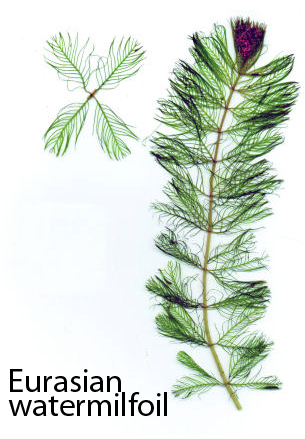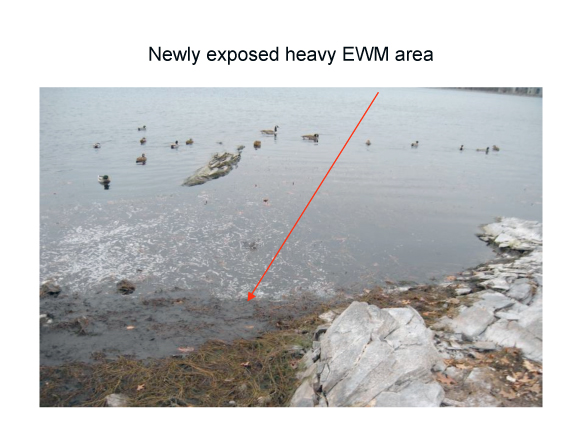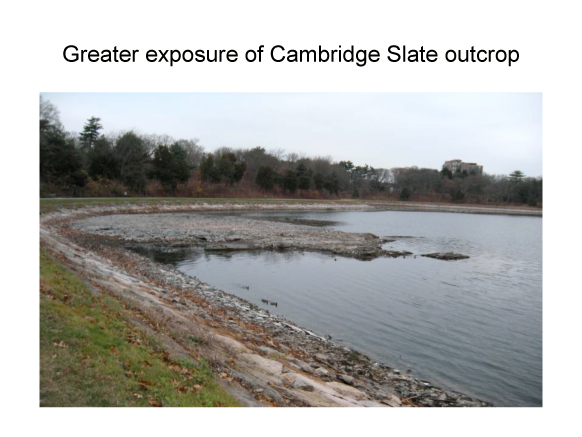On November 1, 2013, the Massachusetts Water Resources Authority will begin slowly lowering the water level at the Chestnut Hill Reservoir as part of its ongoing efforts to eliminate an invasive weed that had taken root in the water body. The goal is to lower the Reservoir by 10 feet by January. MWRA will start to refill the Reservoir in the spring.
Eurasian watermilfoil (Myriophyllum spicatum L.) was discovered several years ago along the water’s edge. Extensive infestation can cause elevated water temperatures and depressed dissolved oxygen levels; floating mats of milfoil are drowning hazards to wildlife and pets.
This method of controlling aquatic weeds, called “draw-down/freeze-off,” curbs Eurasian milfoil naturally and without the use of herbicides. MWRA plans to perform a draw-down/freeze-off to the Chestnut Hill Reservoir every winter for three years. After that, the situation will be evaluated.
Native to tropical climates, Eurasian watermilfoil cannot survive when its roots are exposed to freezing air for long periods of time. By lowering water levels, the milfoil can be dehydrated and, at the right time of the year, frozen to death.
ABOUT THE CHESTNUT HILL RESEVOIR
The Chestnut Hill Reservoir, bordered by the cities of Boston and Newton, was built in 1870. It holds 500 million gallons of water and is an integral part of the MWRA’s emergency back-up water supply system. |
|



